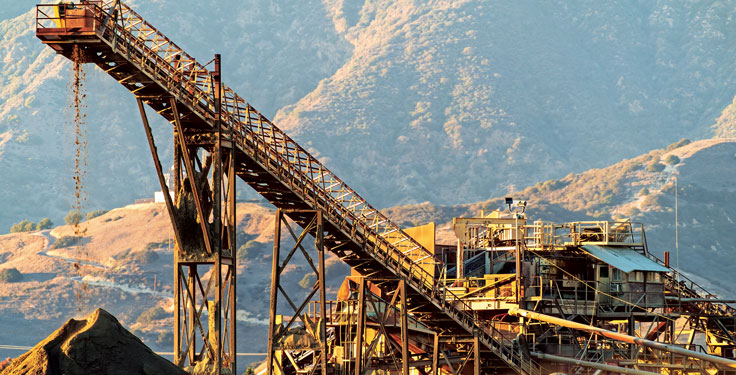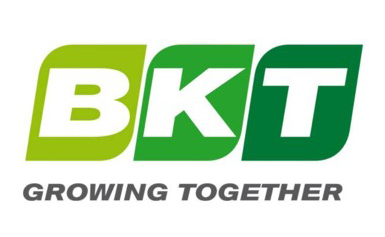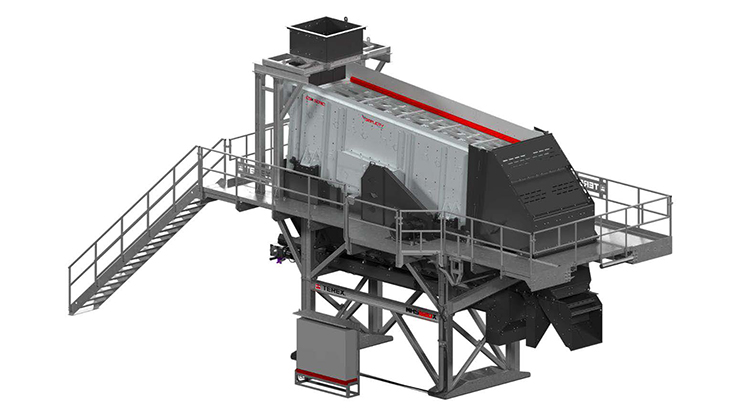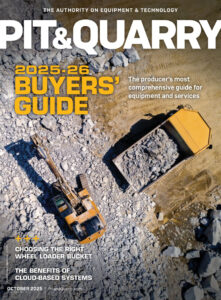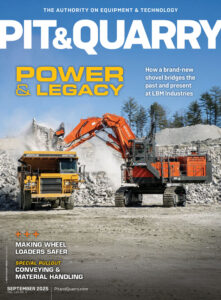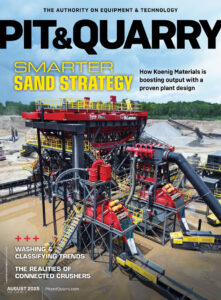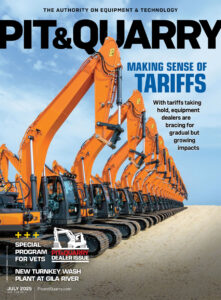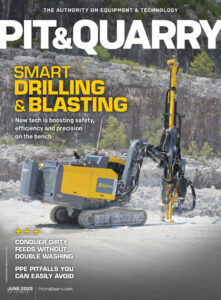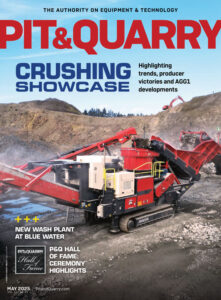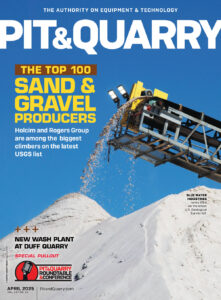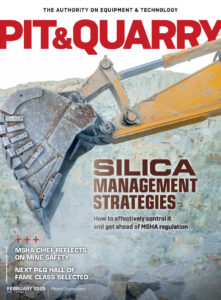One of the biggest contributors to belt damage and the release of fugitive materials is loading a conveyor before the belt is fully troughed. This is called “loading on the transition.”
A few loading on the transition best practices are as follows:
• If space permits, rectify the loading so it starts at the second fully troughed idler.
• Vertical curves, if properly designed, are not an issue. But the design calculations must be verified if the belting or tonnage changes.
• Using bend pulleys for convex curves rather than a spaced array of troughing idlers should be avoided because they are often a source of spillage.
• Diverter plows and other devices, which tend to force the belt to one side or the other, should be located where the belt has enough distance for returning to running centered in the idlers.
• When loading round particles or operating in wet environments, a belt incline of 5 degrees or less will help to create a mass that prevents rolling or fluid cargo from flowing backward toward the tail pulley. The best practice is to load horizontally and then transition into the slope.
• For round-shaped material, consider installing curtains along the slope to knock down bouncing particles and allow them to form into a stable profile.
Belt width and trough angle
The trough angle is initially selected based on experience or the existing idlers for standardization.
Belt width is selected by calculating the cross-sectional area of the bulk material by assuming a troughing angle, an idler with three equal roll lengths and the surcharge angle, lump size and flowability of the bulk solid being handled.
There are two important cross-sectional areas to consider: CEMA 100 percent full and full edge-to-edge. The 100 percent full area is based on a standard belt edge required to prevent spillover between idlers, as the belt sags on the carrying run. Full edge-to-edge loading is used to calculate the maximum potential load on the structure. The best practice is to select the belt width based on 85 percent of the CEMA 100 percent cross-sectional area to allow for surge loads, off-center loading or normal mistracking.
If the upgrade is to prevent spillage from mistracking, it may be possible to use a nonstandard belt width because the wing lengths of most troughing idlers allow for more room than what is considered acceptable for mistracking belts. It may also be possible to change the standard trough angle or use a custom-designed idler to allow for more cross-sectional area.
Also, two common techniques can be incorporated into a new or complete conveyor design to make future upgrades less costly.
The first technique is changing the trough angle of the idlers to raise the capacity by increasing the cross-sectional area. In new designs, consider using 20-degree idlers.
Upgrading to 35-degree idlers represents a 27 percent increase in cross-sectional area. Going from a 20- to a 45-degree trough angle, meanwhile, is a 37 percent increase.
Although 35-degree idlers are fairly standard, it is important to note that for retrofit upgrades, going from 35- to 45-degree idlers is only an 8 percent cross-sectional area increase.
A second common technique for new construction is to design the structure for the next-wider belt width and use CEMA wide-base idlers. The mounting dimensions of the wide-base idlers allow for a future replacement with a wider belt.
For example, if the structure for a 48-in.-wide belt and a 20-degree surcharge angle using 35-degree trough idlers was designed for wide-base idlers, the belt width could be increased to 55 in. This results in a 33 percent capacity increase with the same trough angle and belt speed. Changing from a 35- to a 45-degree trough angle with the wider belt and idlers would result in a 90 percent increase in cross-sectional area.
This method is not often used because there is resistance to increasing capital cost for a wider and higher load-bearing structure, higher material mass and a larger drive. But it is an excellent approach if there is an expectation to increase capacity.
Belt speed
CEMA provides some guidance on belt speeds for different classes of material in Chapter 4 of Belt Conveyors for Bulk Materials (Seventh Edition).
Generally, a wider belt operating at a lower speed will reduce fugitive material release because the potential for fugitive material release is directly proportional to belt speed and capacity. The lower CEMA-recommended belt speeds should be used in the first iteration of the design. Then, additional iterations can be tried by changing the belt width, trough angle and belt speed to arrive at a reasonable solution.
Discharge chute
For a capacity increase, the discharge chute will need close review. The trajectory path should be plotted so the stream of material impacting the chute does not create a situation where there is zero or negative vertical velocity on impact with the chute.
If the material can stay suspended at the impact location, it will increase the chance of buildup and blockage of the chute. If the angle or liner is changed, it must not create a slow-flow situation where material backs up and accumulates in the chute. The discharge chute cross-sectional area should be a minimum of four times the cross-sectional area of the loose bulk solid.
Receiving chute
The design of the loading chute and skirtboards requires attention to detail to minimize fugitive material release.
CEMA uses two-thirds of the belt width for the inside dimension of the loading chute skirtboards – regardless of belt width. Idler fouling and spillage can happen when uneven loading causes the belt to drift to such a degree that there is an opening between the inside of the chute wall and the edge of the belt where material can escape.
Best practice in design considers the amount of allowable mistracking, plus the thickness of the sealing system, to determine the distance from the edge of the belt to the outside of the skirtboards as the minimum dimension on each side.
Conclusion
There can be a large benefit to upgrading when the entire system design is considered. And there should certainly be an expectation of increased productivity.
Todd Swinderman is president emeritus at Martin Engineering.

